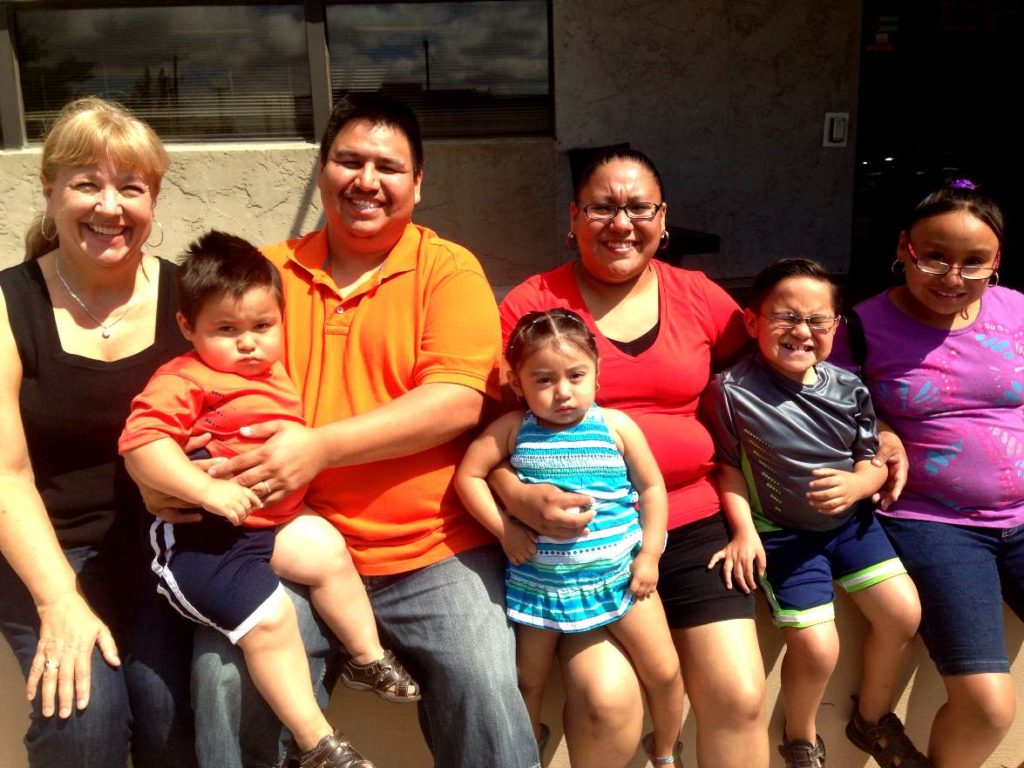In Minnesota, more immigrants facing criminal charges are held with high or no bond, making it hard to fight their cases.
Archives
What happens to DACA on September 5? ILCM and Navigate answer.
 What’s going to happen on September 5? That question was on many minds on the sunny Saturday morning in El Colegio’s cafeteria, one of many questions at the Navigate/Immigrant Law Center of Minnesota policy/legal update. September 5 is the deadline set by the Texas attorney general’s letter to President Trump. The letter, signed by ten state attorneys general, threatens legal action to overturn DACA unless the president agrees to phase out the program.
What’s going to happen on September 5? That question was on many minds on the sunny Saturday morning in El Colegio’s cafeteria, one of many questions at the Navigate/Immigrant Law Center of Minnesota policy/legal update. September 5 is the deadline set by the Texas attorney general’s letter to President Trump. The letter, signed by ten state attorneys general, threatens legal action to overturn DACA unless the president agrees to phase out the program.
The September 5 date is a threat, not a legal deadline, ILCM director John Keller said on July 22. This is a political moment. No one knows exactly what will happen.
On July 21, 20 state attorneys general, including Minnesota Attorney General Lori Swanson, responded to the threat. They wrote to Trump to defend DACA. That’s twice as many state attorneys general defending DACA as those who signed on to the Texas attorney general’s letter attacking DACA.
There could be several scenarios ahead for DACA, Keller explained. Despite the Texas threat to file suit on September 5 to end DACA, the possibilities remain the same as those talked about since the election:
- The president could defend and protect DACA and it could continue as it has – he could order the U.S. Attorney General to defend DACA against lawsuits or he could pressure the 10 Republican state attorneys general to stop their lawsuit.
- The president could modify DACA and say that only those who have applied prior to a certain date could receive DACA and continue to renew work permits, but that no new applications would be granted.
- The president could say that no new applications would be accepted, and that people who have DACA can use their work permits only until they expire and not renew them.
- The president could shut down on DACA on a specific date and cancel work permits as of that date.
In the worst case scenario, asked one person, what should a person with DACA do?
“If you have not had a comprehensive consultation with an immigration attorney in the past year, do that,” Keller said. “Consult an immigration attorney to see if there is any additional protection that might be available to you. Do that even if you have worked with an attorney on your DACA. It’s still worth a legal update or a legal check-up to see if there is any new scenario that would be helpful.”
Keller began the July 22 policy/legal update with thanks for the work that Navigate-MN does in the community. While ILCM represents immigrants in courts and immigration proceedings, he said that its work is political as well, focusing on advocacy for immigrants and refugees in the state and national political arenas along with Navigate and other organizations.
The Saturday morning meeting, which focused specifically Deferred Action for Childhood Arrivals (DACA) and Temporary Protected Status (TPS), was part of ILCM’s third focus: education. ILCM’s education work includes Know Your Rights workshops for immigrants and refugees, community education about legal and political immigration issues, and education of the larger community about immigrants and refugees.
On July 22, Navigate organizers emphasized the need for political organizing and building political will to defend immigrants and refugees.
“We didn’t get DACA because of the goodness of Obama’s heart, but because of organizing and building power in the community,” an organizer said. She emphasized that, while defending DACA is crucial, people also need to defend the future of the larger immigrant community.
Hudayfi Barsug: Young Somali man becomes school role model
Hudayfi Barsug went to school in Burnsville – now he’s back, as an educational assistant, helping other young Somali students. Next step? He’s going to college, to become a teacher.
Ilhan Omar: “America’s hope and the president’s nightmare”
Minnesota State Representative Ilhan Omar talks to Trevor Noah on the Daily Show about her immigrant journey and her work as a state representative in Minnesota.
Dream Act: One more time

They grew up here, went to school here, work here, pay taxes here, raise their own children here – let them become citizens. That’s the gist of the latest Dream Act, unveiled Tuesday (July 20) by Senators Lindsey Graham (R-SC) and Dick Durbin (D-IL). According to their one-page summary:
The Dream Act would allow these young people to earn lawful permanent residence and eventually American citizenship if they:
- Are longtime residents who came to the U.S. as children;
- Graduate from high school or obtain a GED;
- Pursue higher education, work lawfully for at least 3 years, or serve in the military;
- Pass security and law enforcement background checks and pay a reasonable application fee;
- Demonstrate proficiency in the English language and a knowledge of United States history; and
- Have not committed a felony or other serious crimes and do not pose a threat to our country.
This Dream Act is a successor to about a dozen earlier Dream Acts. Senator Dick Durbin and Senator Orrin Hatch (R-UT) introduced the first one in 2001. A 2010 version passed the House of Representatives, which then had a Democratic majority, but couldn’t pass the Senate.
Continuing failure to get a Dream Act passed led to President Obama’s 2012 action establishing Deferred Action for Childhood Arrivals, more often known as DACA. Only Congress can establish a path to legal permanent residence and citizenship, so DACA works only as an order to defer deportation and allow a two-year work permit. DACA allowed two-year renewals of status in 2014 and 2016. Currently, about 800,000 young people have DACA protection.
DACA is under threat from a group of states led by Texas, who say they will mount a legal challenge to end DACA unless the president stops all renewals and new applications by September 5. It’s not clear whether the Trump administration will instruct the attorney general to defend DACA against such a lawsuit.
Despite Trump saying last week that Congress should solve the problem of Deferred Action for Childhood Arrivals (DACA) recipients through legislation, his aides said yesterday that he would oppose the Dream Act legislation.
For more information:
Here is the draft of a new ‘DREAM Act’ that Trump is already rejecting (McClatchey, 7/20/17)
“These kids are running out of asphalt. They’re running out of runway,” Graham of South Carolina said Thursday when announcing the legislation. “They came out of the shadows at the invitation of their government. They’ve identified themselves and their legal standing is now in question. It becomes an almost moral decision.”
Trump’s Sympathy For Dreamers Doesn’t Extend To Actual Legislation To Help Them (Huffington Post, 7/20/17)
“Graham said he thinks many Republicans would be in favor of allowing Dreamers to stay, especially if Kelly presented them with a plan to secure the border and deport criminals and other bad actors. If Trump assured the public the border was secure, Graham said, Republicans would believe him and be more willing to move forward.”
Valdez: Does this new, bipartisan Dream Act stand a chance? (Arizona Central, 7/19/17)
“Bipartisan compassion. Believe it or not.
“Can this thin vapor survive in an atmosphere thick with the venomous smoke of far-right wrath?
“The future of hundreds of thousands of young people depend on its survival. So does the soul of a great country.”
Graham tells Republicans “moment of reckoning” is coming on Dream Act (CBS, 7/20/17)
“The question for the Republican Party is, what do we tell these people? How do we treat them? Here’s my answer. We treat them fairly. We do not pull the rug out from under them,” Graham said, adding those immigrants, “are no more connected with a foreign country than I am.”
“So to President Trump, you’re going to have to make a decision,” Graham said. “The campaign is over. To the Republican Party, who are we? What do we believe? The moment of reckoning is coming. When they write the history of these times, I’m going to be with these kids.”
Durbin, Graham file Dream Act, hoping to ward off legal challenge to DACA (Washington Post, 7/20/17)
“Durbin said he is actively engaged with the White House on the issue. He first filed “dreamer” legislation 16 years ago; other versions passed the House in 2010 and in the Senate, as part of a larger immigration bill, in 2013. But no bill has ever been passed by both chambers.”
Halima Aden and the beauty of Minnesota
From a Kenyan refugee camp to St. Cloud to fashion runways and glamour magazine covers – Halima represents!
Immigration judge releases man detained after light-rail confrontation
Ariel Vences-Lopez has a U-Visa application pending, and all criminal charges related to the light-rail arrest have been dismissed.
Getting to know new Minnesotans — Part Five: Mixed-status Minnesota families

Fifty years ago in Minnesota, a “mixed marriage” meant a Lutheran marrying a Catholic and that meant trouble ahead. What church would they go to on Sunday morning? How would the children be raised? When the couple grew old and died, could they even be buried in the same cemetery? Today, those questions seem less momentous, just part of the negotiation of family life.
Immigrants made up 13.5 percent of the national population but only 8.3 percent of Minnesota’s population in 2015. The “Getting to know new Minnesotans” series explores some of Minnesota’s immigration picture. Click to read:
When immigration is the issue, however, mixed-status families still face tough issues. A mixed-status family is one in which family members have different immigration statuses. Immigration status comes in many varieties, including:
- U.S. citizens
- Immigrants with legal permanent residence (green cards)
- Non-immigrants with temporary status, such as students or temporary workers
- DACA permit holders
- People with Temporary Protected Status
- Unauthorized immigrants
- Refugees and asylees
A mixed-status family might include parents and children with different statuses, siblings with different statuses, partners with different statuses, and differing configurations.
The Migration Policy Institute estimates that 44,000 Minnesota children, including 32,000 U.S. citizen children, have parents who are unauthorized immigrants. Across the country, millions of people live in mixed-status families with at least one unauthorized immigrant member. And they live in fear.
Pepe and Lupita came from Mexico to the United States more than 20 years ago. They have two daughters, ages 10 and 14. They have worked hard, paid taxes, volunteer at their daughters’ schools, help out at soccer league games. A March 2017 Los Angeles Times article told their family’s story:
“Lupita and Pepe’s daughters are frightened. The children were born in the U.S., and so, unlike their parents, who overstayed their visitor visas, have all the rights of American citizens and are not subject to deportation. The 10-year-old is less aware of the threat than her 14-year-old sister. The teenager is given to crying bouts. ‘She doesn’t want to talk about it,’ explained Lupita. ‘I’ve told her that we have to be prepared. We’ve given her the option to stay or not, but she doesn’t know what to do.’”
Lupita and Pepe have prepared for the possibility of deportation, a possibility that looms larger and scarier than ever under the Trump administration. They have filled out power of attorney forms giving custody of the girls to Pepe’s parents, who are legal residents.
“’This is their country,’ [Lupita] said. ‘This is all they know. It will be devastating for them to go to a place they don’t know.’”
In Atlanta, a therapist described the impact on children in mixed-status families:
“We see a lot of anxiety. For every therapist, there are two or three cases of children whose families are dealing with some sort of immigration issue, whether that be that a parent is in jail, is free but awaiting deportation or they have witnessed a raid,” explained Juliao.
“Some children aren’t sleeping. They lose their appetite; they have nightmares. They don’t want to go to school, because they don’t want to leave mom or dad alone. Or they’re constantly crying, they’re more irritable and acting impulsively or angrily,” she added.
The Intercept reported on U.S. citizen children trying to adjust to life in Mexico, talking to Adrián Flores Ledesma, who works with education in Tijuana:
“’Generally these kids left everything behind, because from one day to the next it was an emergency situation,’ he said, ‘They left their clothes, their personal things, everything, and the next day they arrive in Tijuana. They get to a relative’s house, where they don’t fit, they don’t have a room, maybe they’re in the living room, no private bathroom. And all these things make them feel resentful of their parents, and think, why are they in Mexico, if they are Americans? So we also work with the parents, so they don’t feel that sense of guilt.’”
For mixed-status families, current U.S. immigration policy promotes family separation through deportation. Every day’s news brings more stories of families torn apart by deportation.
Every separated family, every fearful child is one more reason to work for comprehensive immigration reform, including a key goal of family reunification.
Hennepin sheriff’s cooperation with ICE raises outcry
Hennepin County Sheriff Richard Stanek is under fire from county officials and advocates who argue his office does too much to help immigration authorities — even as the Trump administration called him out recently for not cooperating enough.
ICE Officers Told to Take Action Against All Undocumented Immigrants Encountered While on Duty
ICE orders officers to exercise no discretion – every undocumented person they encounter must be put into deportation proceedings.




